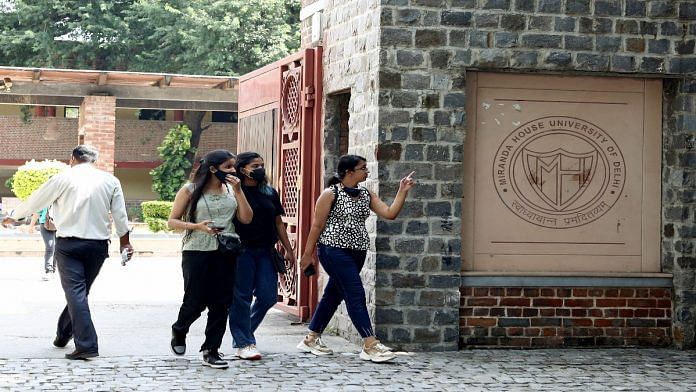Following months of deliberation, the University of Delhi decided to make the Central Universities Common Entrance Test, commonly known as the CUCET (or the DUCET) the basis of admission into its colleges. These changes were suggested under the New Education Policy, 2020.
According to this, scoring well in the new CUCET will become the means to acquiring a seat in highly competitive colleges. This will resolve two issues that have existed in the current system dependent upon board results — it will be a more reliant, centralised indicator of aptitude; and it will settle the inconsistencies that come with the multiple boards (state, ICSE, IB) that exist in India. However, underscoring these claims of relative improvement lies a more grim picture of inequalities — both of opportunities and access to resources.
The current system
At present, a fairly simple admission process is followed in DU — students who have already received their class 12 board percentages register to DU through its portal, where they are asked to put in relevant documents such as their mark sheet and personal details. Upon completion, students wait for the cut-offs which are based on the overall board percentages in certain subjects. In this process, students do not have to deal with hassles of additional exams since the exams which are necessary for them to graduate also help in their admissions.
What is clear is how this admission process is largely equitable. Besides sitting for the class 12 exams, this system does not press further demands on students. Although students coming from privileged backgrounds who receive better education in their schools have a higher chance of scoring well, it has been noticed that even government school students can score just as well, as has been the case in Delhi for the last five years.
Problems with CUCET
The CUCET fundamentally alters this ease of admission by introducing a new layer that students must pass to receive admissions for the same seats. It is the introduction of this new layer that lies at the core of all the issues that I am going to discuss.
One of the first concerns is resources. It is to be expected that with a new system of assessments, students will have to put extra money to prepare for these entrances. This primarily includes resources for tuition and help books. This will create the first set of inequalities as not everyone will have access to good quality material to help prepare them for these exams.
Coaching centres in India have played a crucial role in stacking people’s preexisting socio-economic resources against them. Coaching centres dedicated to engineering entrance exams are not only deeply gendered but also spaces of upper caste domination. Given the prestige associated with DU, we can expect a continuation of this trend wherein these coaching centres will primarily cater to the upper caste population who have access to exorbitant resources to pay for their services. This will be a more systemic inequality as institutions will become the sites through which caste and class-based inequalities are solidified.
I have mentioned earlier that one of the main benefits of the current system is its dependence on board results to offer admissions. As a new layer is introduced and new demands are placed on students, those hailing from underprivileged backgrounds, especially women and first-generation learners will find it exceedingly hard to muster resources to study for a new set of exams. This will narrow the pool of students sitting for the DUCET, while also, perhaps limiting students taking their final exams seriously. In short, the loss of seamlessness in the admission process will be accompanied by a concomitant loss of candidates vying for admissions.
These points demonstrate how a new set of inequalities will be created with the CUCET’s introduction. This mandatory shift to a new system for admissions will add a form of red-tape that students from underprivileged backgrounds will find difficult to transgress. In the process, they will be left behind and inequalities based on class, caste and gender will be solidified — considerations overlooked by DU’s governing body.
None of this is meant to dismiss the inherent issues present in board-based admissions — they are not holistic, transparent or proportionately rewarding. It must be remembered that the CUCET itself is an examination and does not keenly address all these concerns. Instead, by adding a new layer, it only boosts inequality. No matter the concerns with boards, they were an accessible bridge between final exams to universities, which will be lost with CUCET.
The author is a student at Ashoka University, Haryana. Views are personal.







